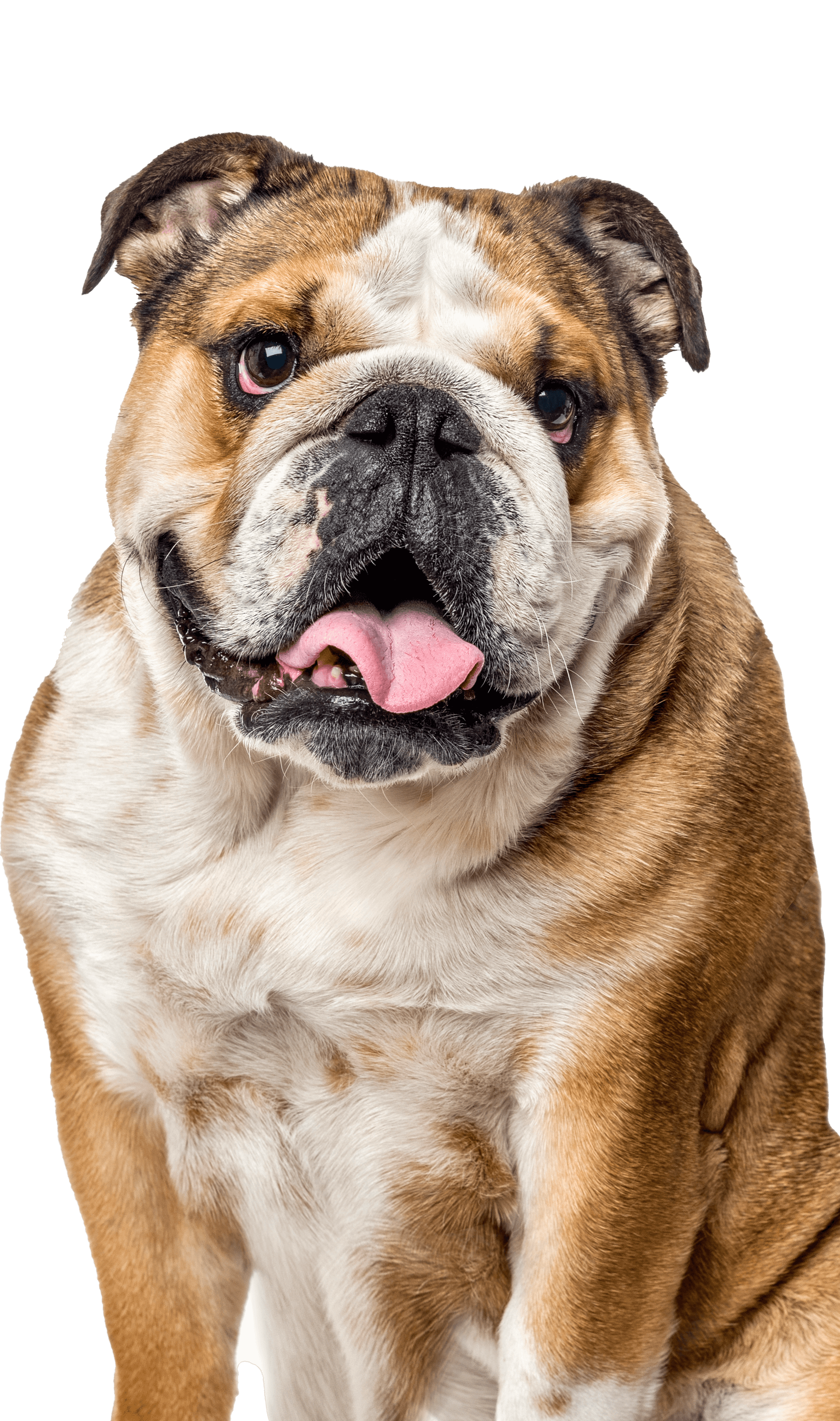Do you brush your dog’s teeth every day?
Chances are you don’t. Many dog owners take good care of their own dental health but tend to neglect their dog’s. It’s often not on purpose. They just don’t think about it. Their dogs eat and drink alright, and they rarely get cavities. So, why brush?
43% of dog owners admit that they never brush their dogs’ teeth, despite 76% of them knowing that it’s important for their health.1
Dogs’ teeth – like ours – are closely tied to their overall health and should be given the same priority. Without regular brushing, plaque and tartar build up on the teeth and gums. This causes periodontal disease, one of the most common health problem in dogs. Symptoms include bad breath, yellow or brown teeth, broken or loose teeth, and painful infections. It can also carry dangerous bacteria into the bloodstream, affecting the heart, liver, and kidneys.
Nearly 90% of dogs have some form of periodontal disease by age two2 – but it’s 100% preventable with regular cleaning.

How to Brush Your Dog’s Teeth
1. Buy dog toothpaste and a toothbrush. Never use human toothpaste on a dog. Human toothpaste contains ingredients that can make dogs sick, like xylitol, which is toxic for dogs. Dog toothpaste is safe for dogs to swallow, and it comes in flavors they love, like beef, chicken, and peanut butter.
2. Slowly acclimate your dog to the toothpaste and toothbrush. Take your time introducing the toothbrush and toothpaste to your dog. The process may take several weeks. Start with the toothpaste. Put a small amount on your finger and let them lick it off while praising them. Afterward, reward them with a treat to form positive associations. If your dog has sensitive teeth and gums, Dogswell Soft & Chewy treats are a great option. Do this daily for about a week. Then introduce the toothbrush, letting your dog smell and explore it. Add the toothpaste to the brush and let your dog lick it off. Again, use lots of praise and treats.
3. Slowly acclimate your dog to having their teeth and gums touched. Once your dog has accepted the toothbrush and paste, gently lift their lips and quickly rub some of the paste onto your dog’s teeth and gums, offering treats immediately afterward. Do this for a few days, and then try it with the toothbrush. Do this daily for another week or more, until your dog is comfortable with you and the brush touching their teeth and gums.
Tip: Train your dog to associate a certain word or phrase with teeth brushing, like “Teeth cleaning time!” Saying this before each session helps them know what’s coming and can ease anxiety.
4. Start with very short brushing sessions. When your dog is calm and happy, put toothpaste on the toothbrush, lift their lips, and brush their teeth and gum line for 15-30 seconds. Brush quickly so your dog doesn’t get agitated or bored, and give praise while brushing.
5. Work your way up to longer brushing sessions. Try to brush each of their 42 teeth, including the molars in the back. You can learn more about their teeth in our blog Everything You Need to Know About Dog’s Dental Health.
Tip: If your dog has a lot of energy, take them for a walk or play session before brushing their teeth.
6. Set a teeth cleaning schedule. Brushing your dog’s teeth daily is best, but not always feasible. If daily doesn’t work for you, aim for three times a week. Adding a reminder in your phone is helpful so you won’t forget. In addition to regularly brushing at home, your dog’s teeth should be examined and professionally cleaned at your veterinarian’s office once a year.
It’s never too late to start brushing, but if your dog already suffers from bad breath, consider treating with Dogswell’s Dental Jerky. Each piece of dental jerky is formulated with a special blend of ingredients that freshens breath and supports overall dental health. This chewy, meaty jerky provides an effective and appealing alternative to crunchy dental treats for picky eaters or older dogs with sensitive teeth and gums.
Brushing your dog’s teeth is an important part of taking care of your dog’s health and being a responsible dog parent. Once you and your dog both get the hang of it, brushing their teeth becomes more routine and less of a chore. It may even be fun!
1 Ipsos Study. November 2015.2 Fernandes 2012, Queck, et al. 2018, Stella et al. 2018. The World Small Animal Veterinary Association Global Dental Guidelines. Journal of Small Animal Practice. Vol 61. July 2020.

